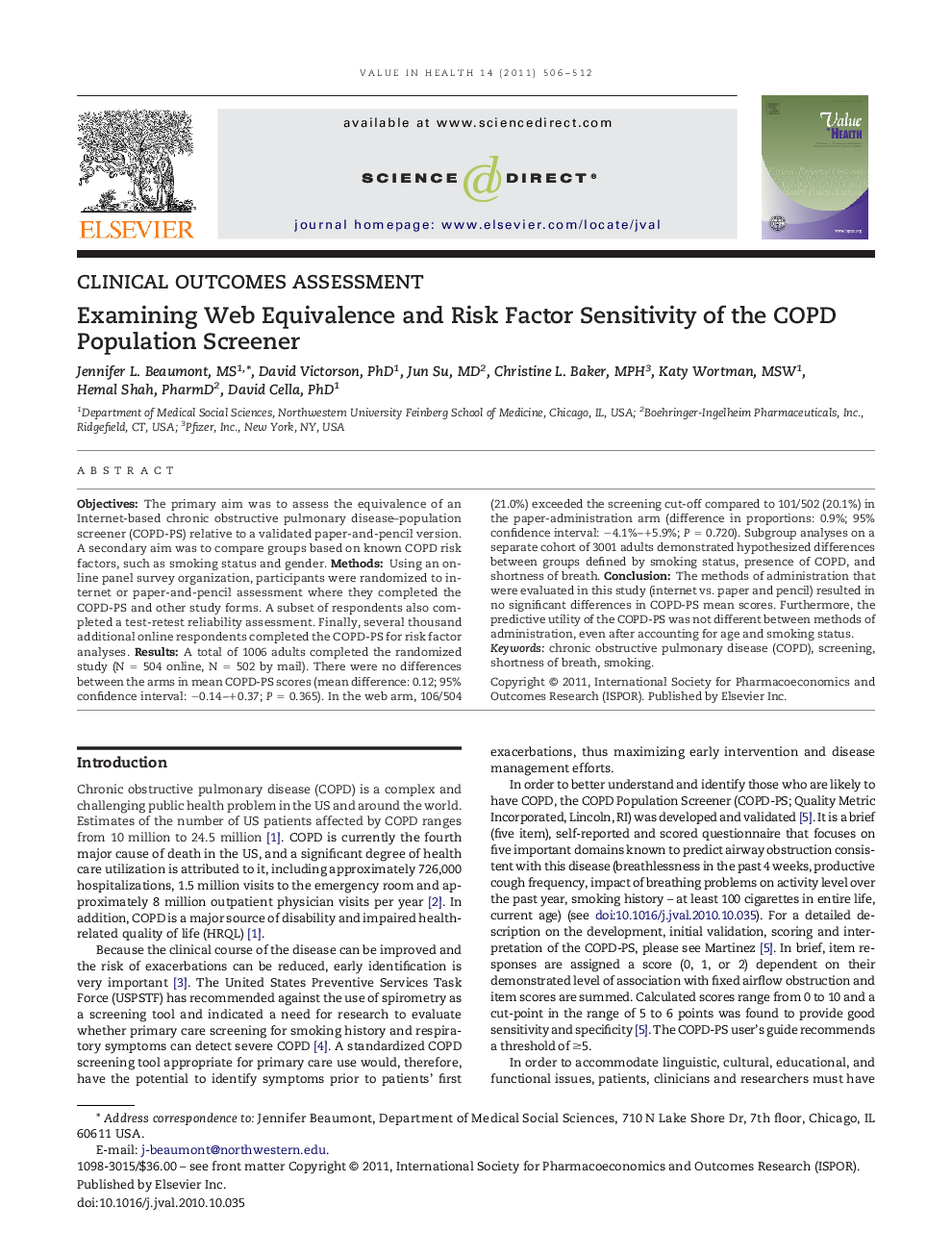| Article ID | Journal | Published Year | Pages | File Type |
|---|---|---|---|---|
| 989424 | Value in Health | 2011 | 7 Pages |
ObjectivesThe primary aim was to assess the equivalence of an Internet-based chronic obstructive pulmonary disease–population screener (COPD-PS) relative to a validated paper-and-pencil version. A secondary aim was to compare groups based on known COPD risk factors, such as smoking status and gender.MethodsUsing an online panel survey organization, participants were randomized to internet or paper-and-pencil assessment where they completed the COPD-PS and other study forms. A subset of respondents also completed a test-retest reliability assessment. Finally, several thousand additional online respondents completed the COPD-PS for risk factor analyses.ResultsA total of 1006 adults completed the randomized study (N = 504 online, N = 502 by mail). There were no differences between the arms in mean COPD-PS scores (mean difference: 0.12; 95% confidence interval: −0.14–+0.37; P = 0.365). In the web arm, 106/504 (21.0%) exceeded the screening cut-off compared to 101/502 (20.1%) in the paper-administration arm (difference in proportions: 0.9%; 95% confidence interval: −4.1%–+5.9%; P = 0.720). Subgroup analyses on a separate cohort of 3001 adults demonstrated hypothesized differences between groups defined by smoking status, presence of COPD, and shortness of breath.ConclusionThe methods of administration that were evaluated in this study (internet vs. paper and pencil) resulted in no significant differences in COPD-PS mean scores. Furthermore, the predictive utility of the COPD-PS was not different between methods of administration, even after accounting for age and smoking status.
